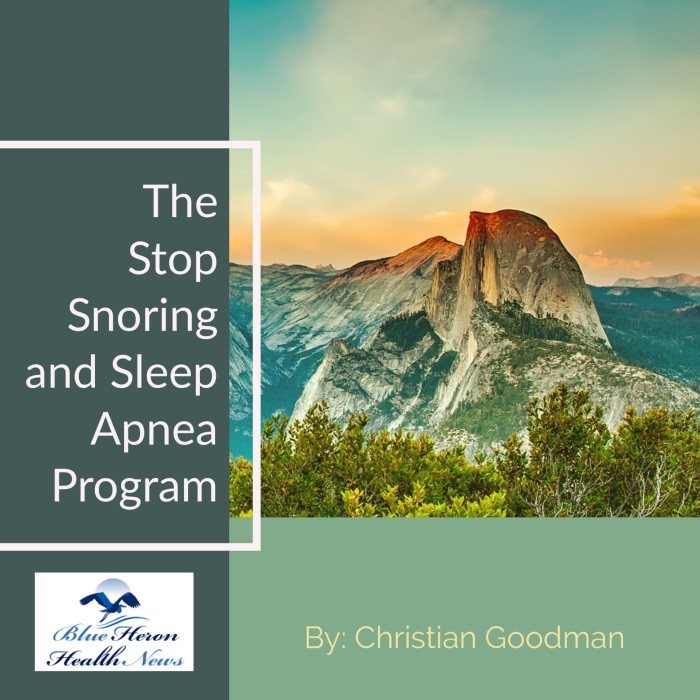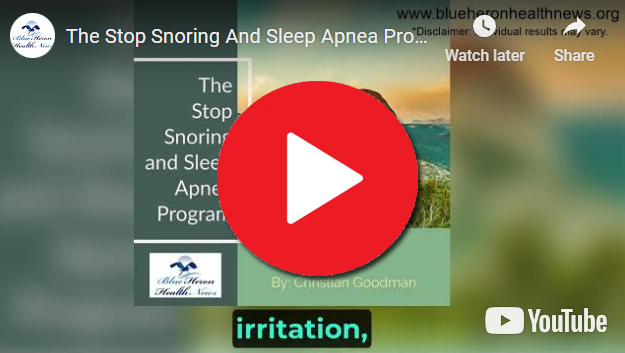
The Stop Snoring And Sleep Apnea Program™ a well-researched program created to help stop snoring and sleep apnea so that you can have a good night sleep. The techniques that you will learn from this program works immediately. It will only take you 3-7 minutes to perform these simple exercises that the author has recommended but the results that you will get will help you have a good night sleep as soon as tonight. Within a week, snoring will be a thing of the past.
How do mandibular advancement devices (MADs) work for sleep apnea?
Mandibular Advancement Devices (MADs) are oral appliances used to treat obstructive sleep apnea (OSA) and snoring by repositioning the lower jaw (mandible) forward during sleep. This forward positioning helps keep the airway open, reducing the likelihood of airway obstruction. Here’s how MADs work for sleep apnea:
Mechanism of Action
1. Forward Jaw Positioning:
- Mandibular Advancement: MADs hold the lower jaw slightly forward, which enlarges the upper airway. This forward positioning helps prevent the tongue and soft tissues at the back of the throat from collapsing and obstructing the airway.
- Increased Airway Space: By increasing the space in the airway, MADs reduce the resistance to airflow, allowing for smoother and more consistent breathing during sleep.
2. Stabilization of Soft Tissues:
- Tissue Support: The forward position of the jaw supports the soft tissues of the throat, including the tongue, uvula, and soft palate, reducing the likelihood of vibration that causes snoring.
- Reduced Collapse: Stabilizing these tissues helps prevent them from collapsing into the airway, which is a common cause of obstructive sleep apnea.
Benefits of MADs for Sleep Apnea
1. Improved Airflow:
- Open Airway: By maintaining an open airway, MADs help reduce the number and severity of apneas (complete obstructions) and hypopneas (partial obstructions) during sleep.
- Enhanced Breathing: Patients experience more regular breathing patterns, leading to fewer disruptions and better oxygenation throughout the night.
2. Reduced Snoring:
- Decreased Vibration: By preventing the collapse of the soft tissues, MADs reduce the vibrations that cause snoring, improving sleep quality for both the patient and their bed partner.
3. Non-Invasive Treatment:
- Comfort and Convenience: MADs provide a non-invasive alternative to other treatments like CPAP (Continuous Positive Airway Pressure) therapy and surgical interventions.
- Ease of Use: They are relatively easy to use and adjust, making them a practical option for many patients.
Indications for Use
1. Mild to Moderate OSA:
- Primary Indication: MADs are particularly effective for patients with mild to moderate obstructive sleep apnea.
- Alternative to CPAP: They are an excellent alternative for patients who cannot tolerate CPAP therapy due to discomfort, claustrophobia, or other issues.
2. Primary Snoring:
- Snoring Reduction: MADs are also used to treat primary snoring (snoring without apnea), improving overall sleep quality.
3. Combination Therapy:
- Adjunctive Treatment: In some cases, MADs can be used in conjunction with other treatments, such as positional therapy or CPAP, to enhance overall effectiveness.
Fitting and Customization
1. Professional Fitting:
- Dental Specialist: MADs should be fitted by a dentist or orthodontist with expertise in sleep medicine to ensure proper fit and effectiveness.
- Customization: Custom-made devices are molded to the patient’s teeth and mouth, providing a better fit and greater comfort compared to over-the-counter options.
2. Adjustments and Follow-Up:
- Initial Adjustments: The device may require several adjustments to achieve the best fit and effectiveness. These adjustments are typically done over a few weeks.
- Regular Follow-Up: Regular follow-up appointments are essential to monitor the device’s effectiveness and make any necessary adjustments.
Potential Side Effects and Management
1. Jaw Discomfort and Pain:
- Initial Discomfort: Some patients may experience jaw discomfort or pain when they first start using the device. This is usually temporary and subsides as the patient adapts to the appliance.
- Adjustment Period: Gradually adjusting to the device by wearing it for shorter periods initially and then increasing the duration can help.
2. Teeth Movement:
- Dental Changes: Prolonged use of MADs can cause minor changes in the position of the teeth.
- Regular Monitoring: Regular dental check-ups can help monitor and manage any dental changes.
3. Dry Mouth and Salivation:
- Oral Effects: Some patients may experience dry mouth or excessive salivation.
- Hydration: Drinking water and using saliva substitutes can help manage these symptoms.
Effectiveness and Considerations
1. Success Rates:
- Effectiveness: MADs are generally effective for reducing snoring and treating mild to moderate OSA, with success rates varying among individuals.
- Compliance: High compliance rates contribute to their overall effectiveness.
2. Combination Therapy:
- Adjunct Treatment: MADs can be used in combination with other treatments, such as weight loss and lifestyle changes, to improve outcomes.
- Tailored Approach: The choice of treatment should be tailored to the individual patient’s needs and specific condition.
Summary
Mandibular Advancement Devices (MADs) work by repositioning the lower jaw forward during sleep, which helps to keep the airway open and reduce the likelihood of airway obstruction. This mechanism improves airflow, reduces snoring, and treats mild to moderate obstructive sleep apnea. MADs are a non-invasive, comfortable, and effective treatment option, especially for patients who cannot tolerate CPAP therapy. Proper fitting, regular adjustments, and follow-up care are essential to maximize the effectiveness of MADs in managing sleep apnea and improving overall sleep quality.

The Stop Snoring And Sleep Apnea Program™ a well-researched program created to help stop snoring and sleep apnea so that you can have a good night sleep. The techniques that you will learn from this program works immediately. It will only take you 3-7 minutes to perform these simple exercises that the author has recommended but the results that you will get will help you have a good night sleep as soon as tonight. Within a week, snoring will be a thing of the past.